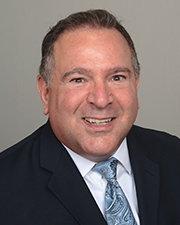
Seven tax essentials that every commercial property owner should know in 2023 - by Bill Cusato

With year-end comes the pleasure of tax preparation, but every year the rules are certain to change. Will you have enough losses to cover your tax liability, or heaven forbid, will you be writing a large check? Commercial property owners have a number of extremely lucrative tools at their disposal - would any of the seven following strategies work for you?
Cost Segregation: Most commercial property owners now take advantage of cost segregation studies to achieve phenomenal depreciation deductions at a relatively minimal cost. An engineering-based study will assign values to all property components, many of which can be re-scheduled from 39-year (or 27.5 residential) property to 5, 7 and 15-year lives. Examples of 5 and 7-year property include some special purpose electrical, plumbing, millwork, HVAC, floorings, finishes and much more. Examples of 15-year property include paving, striping, landscaping, sidewalks, curbing, walls, stormwater systems and more. This benefit can be applied to new acquisition, new construction, and renovation investments. On average, approximately 20% of a property basis will be eligible for this benefit. In that case a $3 million depreciable basis would generate $600,000 in accelerated depreciation benefit. The balance of $2.4 million would continue to be depreciated over 39 or 27.5 years.
100% Bonus Depreciation: While previously reserved for new construction projects, TCJA ushered in new applicability for bonus depreciation to acquired properties as well effective late 2017. The $3 million example above would generate a $600,000 benefit, with a 100% write-off in 2022. Note that in 2023, bonus depreciation will be reduced to an 80% level, still an extremely rewarding tax benefit. If these deductions exceed your 2022 tax liability, the balance can be rolled forward.
For properties placed in service in prior years, look-back cost seg studies can be conducted resulting “catch-up” depreciation. There is no need to file amended tax returns. In the example above, if the property were acquired or constructed in 2018, the catch-up on this $3 million basis would be approximately $550,000.
Qualified Improvement Property (QIP): Generally, since 2018, when properties undergo renovation, tenant improvements, etc., QIP is related to those interior improvement costs that are not structural in nature. QIP-qualified costs receive a 15-tax live which is eligible for prevailing rates of bonus depreciation. Newly constructed projects are not QIP-eligible, nor are rooftop, building envelope or other exterior improvements.
Expensing Repairs: Many costs associated with replacing roofs, HVAC systems, security, life safety, routine maintenance and more, may be 100% expensed based on the Tangible Property Regulations.
Retirement of Assets: In addition to accelerating depreciation deductions, a cost segregation study will also place values on 39 and 27.5-year base building components. This “baseline” of asset values will support the “retirement” of asset values in the course of future capital improvements. For example, an acquired property with a commercial roof value of $390,000 will have a retirement value of $360,000 when replaced in three years.
Energy Incentives: In keeping with national trends, IRS programs 179D and 45L provide lucrative incentives to newly constructed and re-developed properties. In 2022, EPAct 179D provides a deduction of up to $1.84 per s/f total for eligible lighting, HVAC and building envelope systems. IRS 45L is specific to multifamily projects with three or fewer floors and a credit of $2,000 per eligible unit. Both programs have been modified for 2023.
If you expect a tax liability in 2022, hopefully one of these programs will help you to preserve cash for your next project. It is always a good idea to discuss these strategies with your tax advisor or CPA.
You can learn more by contacting Bill Cusato at bill.cusato@sourceadvisors.com or at 978-869-5622. He is a senior director at Source Advisors, who recently acquired Bedford Cost Segregation. Cusato has spent over 17 years and delivered several thousand studies to commercial property owners in the New England region.